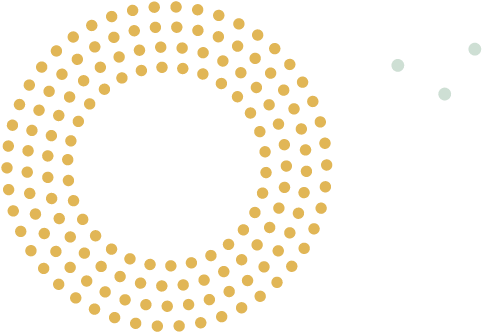Identifying your target audience is the single most important element to successfully running a business. Why? You’re going to waste your time, energy, and resources marketing to either everyone or no one and you’ll see very little return on your investment. Here’s what you must know about your target audience to save precious time and resources and lead your business in the right, profitable direction.
Know the problem you are solving.
Before you get excited and start trying to connect with your target audience, you need to be intentional about defining your audience. You’re not just picking an audience out of a hat and going for it. Instead, start by asking what problems you’re trying to solve. Better yet, consider what problems your desired audience has that your business is uniquely positioned to solve.
If you try to be everything to everyone, you’ll be nothing to nobody.
Problem-solution infrastructure is gold. Problem and solution designation lays the groundwork for effective marketing. Now let’s roll up our sleeves and get into the nitty-gritty of audience definition.
Know who needs this problem to be solved.
Start your target audience exploration by defining demographics or the who. Demographic data is crucial for understanding what identities your target audience occupies. Start by defining these demographic data:
- Age—consider age range and generation
- Gender identity—figure out how they identify
- Occupation—include industry and role
- Salary—how much do they make, and how much are they working with
- Education—explore the highest level of education as well as any trade schools or certification programs
- Family makeup—understand if they’re single, married, and if they have children
- Location—identify if they live in the city or in a rural setting and the geographical region where they reside
Let’s go a little deeper.
Know the values, beliefs, and motivations of your audience.
When exploring your target audience, you can inquire about what role your audience members occupy, what communities they belong to, what makes them tick, what matters most. These are the psychographics of your target audience.
- Are they health nuts?
- Are they Ironman enthusiasts?
- Are they conservative?
- Are they activists for the environment?
If you know your target audience’s annual household income, the surface level analysis tells you how much disposable income they have. However, if you also know where that income comes from you can better understand the financial mindset of your target audience. Then, you know how to cater your communication.
Know the behaviors of your audience.
Your company’s marketing should operate as a guide archetype in the audience’s story. You have the answers. You see your audience. And you walk alongside them on their journey. Accordingly, if you understand audience behavior, you can offer so much more than a product or service. Here’s what to ask:
- When do they purchase?
- How do they purchase?
- When do they interact with brands?
- What media do they consume?
Target audience definition involves asking a lot of questions and being open-minded and curious. You cannot go into data collection mode with a preconceived notion of what the outcome will be. Seek to understand, always.
Know the circumstances for conversion.
When getting to know your audience, don’t forget to explore the circumstances for conversion. In order to get your audience to convert, you need to understand the variables that, when they come together, lead to a conversion. Think of it like a tornado, but less destructive and more profitable. When it comes to understanding your target audience, it goes like this:
Beliefs and Thoughts > Feelings > Actions > Results
We can break this down even further into real-world examples:
Functional—Person A’s wrists hurt because they’ve been working on a computer all day without ergonomic support. They need wrist support to do their job pain-free.
Functional circumstances include goals, budget, and time. For Person A, the goal of a pain-free workday compels them to action.
Emotional—Person B has a wedding coming up. They want to look their best and seek a personal trainer to help them tone and get in shape.
Emotional circumstances include preferences, insecurities, and relationships. So, in this example, Person B may feel insecure about their appearance in anticipation of their wedding day, when all eyes will be on them. That insecurity drives booking a personal trainer.
Social—Person C’s friends all downloaded a popular new gaming app that allows for collaborative play. Without it, they won’t be able to participate in activities and conversations with their friend group, so they consider downloading the app to experience a sense of belonging.
Social circumstances include brand, culture, and awards. For Person C, everybody uses this gaming app and they’d lose social currency if they didn’t download it too.
Ask good questions.
You have to ask the right questions of your audience to get the job of targeted marketed done.
Is the goal a priority or low down on the to-do list?
Are they motivated to purchase today?
Or will they need a few months to mull it over?
Take it one step further by analyzing the heuristics of your audience. A heuristic is an automatic mental behavior. Unpack what those behaviors are for your audience. Everybody has automaticity in their behavior based on their own backgrounds, life experiences, and associations.
Know how to connect the dots and derive actionable insights.
Let’s talk about age. If your target audience is older, they may value face-to-face communication more. Are they millennials? Ditch the traditional advertising tactics; they see right through them. Generation Z? You better be on social media.
Armed with insights, you can craft campaigns likely to land. It’s not about your business; it’s all about the people. Therefore, one of the biggest mistakes you can make when defining your target audience is creating an audience profile based on desire rather than data. Your job is to let the audience tell you what you need to know without expectation or bias. The answers you get from the data will lead to far more effective marketing. I can’t stress this enough.
Define your audience like a pro.
If this is making your head spin, don’t worry there are a few more resources I’ve created for you to walk you through this process! Check out The Starter Kit to learn everything you need to define your target audience, from why it’s necessary to what data to look for. Then, sign up for The Accelerator to rediscover joy, own your definition of success, have more fun, and co-create a business plan that will lead to the life you want to live.

